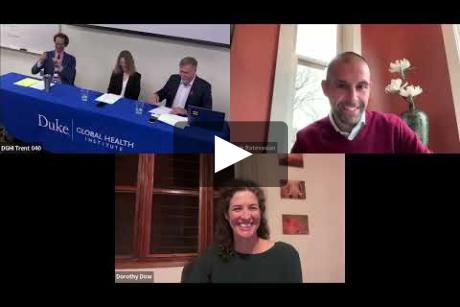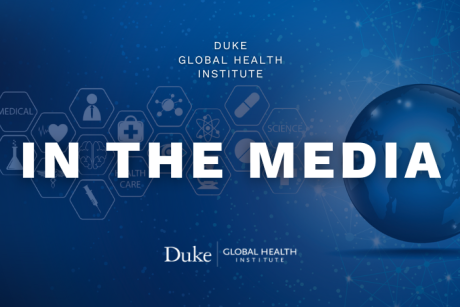DGHI Assistant Research Professor Catherine Staton (Lynch) led a candlelight vigil Sunday night in honor of The World Day of Remembrance for Road Traffic Victims (WDR). The Duke road injuries community attended this inaugural event—one of four nationally recognized events for WDR—to create awareness of road traffic injuries here in Durham and in developing countries.
World Day of Remembrance generates awareness not only about the victims of road traffic injuries but also about the families and communities affected by road deaths and injuries. Road traffic injuries are the leading cause of death for young people aged 15-29, and each year sees more deaths especially in developing countries. WRD provides an opportunity to reflect upon this global burden and discuss how each person can help educate his or her own community.
Dr. Staton opened the vigil with a brief commentary on DGHI and Duke’s commitment toward road traffic education. She discussed her injury prevention research and clinical experience at Kilimanjaro Christian Medical Centre (KCMC) in Moshi, Tanzania as well as in Durham. The Duke Trauma Team then gave a summary of clinical traffic injuries common to Duke Hospital and stressed the importance of education for both drivers and pedestrians.
As the night continued, MSc-GH students and alumni spoke about their research projects taking place all over the world from Sri Lanka to Tanzania to Rwanda. As each student mentioned how the educational tools for teaching road safety need to be modified for appropriate cultural context, they also spoke to the successes of their interventions in changing behavior.
Michael Haglund, a professor of neurosurgery, neurobiology and global health, wrapped up the event by further emphasizing the differences in cultural norms of road traffic safety in each country, specifically between Rwanda and Uganda, between two countries and the importance of research and clinical work in each location to decrease the number of road traffic injuries each year.



